When was the last time you thought about your grip while practicing your golf game? If you are like most golfers, the answer to that question is probably something along the lines of ‘a long time ago’. Most players think about the other fundamentals in the golf swing while practicing – things like swing plane, balance, etc. – while forgetting all about the importance of the grip. Needless to say, this is a mistake. The grip is the only place where you are actually connected to the club during the swing, so it is essential that you form this connection properly. Although there is some room for individual style and preference within the grip, there are also some fundamentals that apply across the board.
If you would like to work toward a better grip in your golf game, this article is going to be an excellent resource. We have compiled ten great golf grip tips for you to review below. Some of these tips will likely be points you have heard other places previously, but some of them should be brand new to you. Even if you only pull one or two tips out of this article that you are able to put into use in your game, those tips could potentially lead to a dramatic improvement out on the course. However, it is important to remember that grip changes take time to produce results, so you are going to need to be patient with this process right from the start.
Each of the tips below has been written from the perspective of a right handed golfer. If you happen to play left handed, please take a moment to reverse the directions as necessary.

If you only pay close attention to one of the tips that we provide in this article, let it be this one – you need to maintain a light grip pressure on the club at all times. By far, the biggest mistake made by amateur golfers with regard to the grip is holding on to the club too tightly. A tight grip limits the freedom of the club as it moves through the ball, taking speed out of your swing and making it harder to hit the sweet spot as well. Simply by holding on with light grip pressure from start to finish, you can dramatically improve the performance of your swing as a whole – even if you make no other changes to any parts of your technique.
Most golfers, when they start to think about using a lighter grip pressure in their swing, immediately worry about one thing – losing control of the club as they swing though impact. Of course, this would be a bad thing, as you don’t want to send the club flying down the fairway (or anywhere else) as a result of your light grip pressure. However, you might be surprised to learn just how little grip pressure you really need to keep the club in your hands successfully. As long as your grips are in good condition, and you have a relatively new golf glove (if you use one), you should have no trouble at all keeping the club in your hands while swinging away.
To work on using a lighter grip pressure without having to worry about sending the club flying, you can start by practicing with short shots before working up to full swings. Find an area to practice your chipping or pitching and hit a few shots while using a light grip pressure on your wedge. Once you get comfortable using light pressure in the short game, move up to half-wedge shots that you hit a distance of 40 or 50 yards. Continue to work your way up one step at a time until you find that you are comfortable enough to make full swings on the range. Eventually, using light grip pressure will just feel like a natural part of your technique, and your game will be improved as a result of the change.
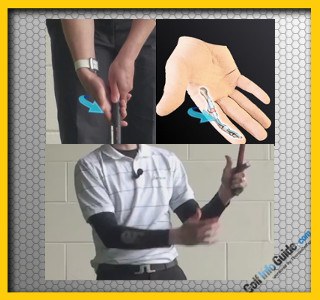
It is important to have freedom of movement in your hands and wrists as you swing the club down through impact. That freedom of movement is why it is important to use a light grip pressure in your swing, and it is also key here when it comes to the placement of the club in your hands. Rather than running the grip of the club up through the palm of your left hand, you want to make sure the club is placed along the base of your fingers. With the club in your fingers, it will have an easier time releasing freely through the hitting area, which is essential if you are going to produce speed and power.
Many beginners make the mistake of placing the club in their palm rather than in the fingers. It is easy to spot a player who has made this mistake because they will be having a difficult time involving their hands and wrists in the golf swing. Players who put the club in their palm will not be able to lag the club in the downswing properly, and they will often fight a slice as well. As you are working on your grip, take a moment to make sure the club is staying at the base of your fingers prior to each swing. If it is not, make the necessary correction before you go ahead with your swing. This seems like a subtle point, but it is one that has a powerful impact on the shots you can hit.
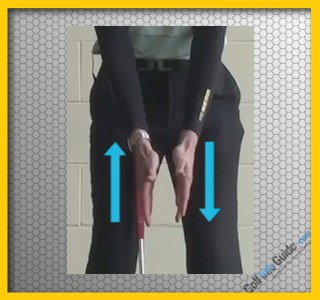
When you take your grip prior to making any swing, it is important that you match up your hands to make sure they are working together properly. At address, your palms should be facing each other as they wrap around the grip of the club. This applies to all golfers, no matter what kind of grip they happen to be using. If you like to play with a strong left hand grip, you need to make sure your right hand is in a strong position as well. Or, if you like to play from a weaker left hand position, you want to turn your right hand into a weak position to match.
You should notice that your grip feels ‘united’ when you match up your hands at address. It is hard to make a quality swing when your palms are not facing each other on the grip, as your right hand and arm will want to do something different from your left hand and arm once the swing gets going. Golf is hard enough as it is without having your hands fighting against each other, so don’t add this hurdle to the list of obstacles you have to deal with in your game. Take a moment to make sure that your hands are working together and you can then cross this item off of your grip to-do list.

The grips that you have on your clubs are going to play a big role in this equation as well, so make sure they are properly cared for and replaced before they get too worn down. Slippery grips make this game nearly impossible to play, so don’t put yourself in that position. New grips aren’t particularly expensive, and most golf shops will put them on your clubs for you (for a small fee). To make sure you don’t have to replace your grips too frequently, care for them by wiping them down with a damp towel after each round. This will remove some of the oil that has been transferred from your hands, which should add to the useful life of the grips.
Picking out the right grips for your hands is another topic that deserves attention, as there is a wide-range of grip types available today (in a wide range of prices). Players who frequently play in wet conditions, or players who have sweaty hands, will want to use something with plenty of texture, such as a corded grip. If you usually play in dry conditions, and your hands don’t sweat, you could opt for a softer grip which will be more forgiving on your skin. Most players have to experiment with a few different grip types before they settle on the type that they will stick with over the years.
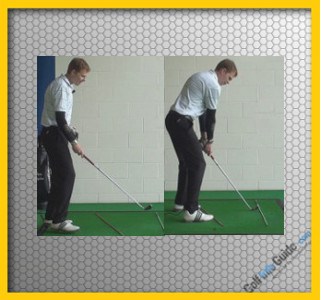
#5 – Take Your Grip After Setting the Club Head Behind the Ball
This is a tip that has more to do with your ability to aim properly than it does with your ability to form a quality grip. When you walk up to the golf ball, place the club head down behind the ball before you have actually taken your grip on the club. You should be holding on lightly with just your right hand at this point, and your focus should be on positioning the club head properly in relation to your target. Once the club head is in place, take your stance and then form your grip on the handle. Taking your grip should actually be the final step before you look at the target and get ready to hit the shot.
There are a couple of things that can happen if you form your grip before you even walk into the shot. First, you may have trouble aiming at your target properly. Since you won’t be able to make fine adjustments to your aim with both hands on the club, there is a good chance that the club face will be aimed at least a little bit to the right or left of your intended target line. Also, if you take your grip early, you could end up squeezing onto the handle rather tightly by the time you start the swing. It is natural for tension to build up in your hands as you wait to swing, so you want to limit how much time passes between when you take your grip and when you actually hit the shot. Hold off on forming your grip until the very end of the pre-shot process and both your aim and your grip pressure should be improved.
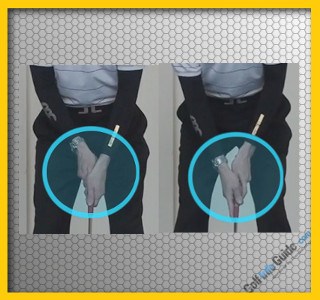
#6 – Make Changes on the Putting Green
Very little of what you have learned about the grip for your full swing is going to translate onto the putting green. When putting, you are going to use an entirely different grip than you will use for the full swing, mostly because you need to take your hands out of the equation. Your hands and wrists have plenty of work to do when hitting full shots, but they should be nearly silent within the putting stroke. By changing your grip, you can make sure your hands are quiet while you use your shoulders to control the movement of the putter.
The biggest change that you are going to make when you step onto the putting green is that you are going to go ahead and put the grip into your palms rather than your fingers. This is a big no-no when talking about the full swing, but it is considered proper technique while putting. Allow the handle of the putter to run up your palms when you take your putting grip, so that the end of the putter is resting right next to the inside of your left wrist. This style of grip will make it nearly impossible for your wrists to hinge as the putter swings, which is going to make it easier to keep the face of the putter square to the target line. This isn’t the only fundamental that you need to learn with regard to your putting stroke, but it certainly is a big one – players who grip the putter properly will automatically be a step ahead of the game on the greens.
Quickly, it should be noted that the grip pressure you use when holding the club is not going to change at all on the putting green. You are still going to want to use light grip pressure when putting, just as you should be doing in your full swing. Fortunately, it is easy to use light grip pressure when putting – since you aren’t making much of a swing – so you should have little trouble adopting this technique.
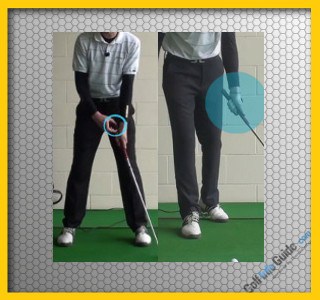
When you want to hit a golf shot that is focused more on control than on power, one of the first things you should do is to come down off the end of the grip by an inch or two. This is commonly called ‘choking down’ on the grip, and it is going to make it easier for you to control the movement of the club as you swing. This adjustment will take some speed out of your swing, so you shouldn’t expect full distance from these kinds of shots – but that isn’t the point. The point here is to control your ball to keep it safely in play, and you should be able to do just that by simply sliding your hands down the grip.
Not only is this a good technique to use when you want to control the ball, but it also works beautifully in the wind. If you are playing on a windy day, you should be trying to keep the ball down in order to avoid the effects of the breeze. By choking down, you will take a little bit of spin off of the ball, meaning the ball won’t climb as high and it won’t be as effected by the wind. Practice these kinds of shots on the driving range so you are ready to pull them out on the course when necessary.
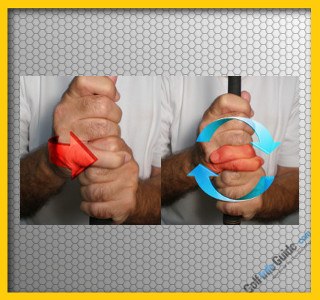
#8 – Trust Your Feel to Pick Between Interlock and Overlap
There are some golfers who will tell you that the interlocking grip is the best way to hold onto the club. There are other golfers who will tell you that the overlapping style of grip is the best way to go. They are both wrong. Which is the best grip? The one that feel comfortable in your swing, and the one that leads to the best results. To determine which one you are going to use in your game, try them both on the range and trust your feel and gut instinct. There are players at the top levels of the game that use both of these types of grips, which is proof that it is possible to play well with either option.
If you are unclear as to the difference between these two grips, review the following points –
As mentioned above, there is no right or wrong when it comes to picking between these grips. Try them both, be open minded as you experiment, and pick the one that leads you to the best results.
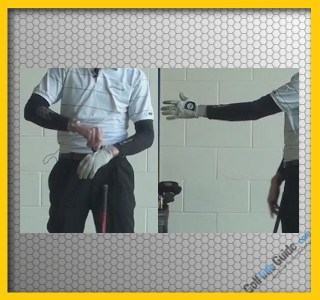
Do you have to use a golf glove each time you play? No – of course not. If you prefer to play without a glove, and you are able to control the club properly with just your bare hands, you are absolutely free to play without a glove. However, with that said, it is a good idea for all golfers to get comfortable with the use of a glove just in case the need should arise during a round. For example, if the rain starts to come down and you have never before used a glove, you may have trouble finishing your round properly. Or, if you develop a blister, you might choose to use a glove to protect your skin as you finish out the day.
To learn how to use a glove, simply pick one up at your local pro shop and add it to your bag. From time to time, hit a few shots on the range while wearing the glove to gradually build up a comfort level with this piece of gear. Even if never becomes natural or comfortable for you, at least you will have experience hitting some shots with the glove on your hand. Then, you can stash the glove away in the bottom of your bag and it will be waiting there should the need arise.
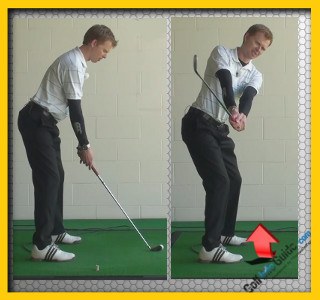
#10 – Practice, Practice, Practice
There is no substitute for practice when it comes to getting comfortable with your grip. Fortunately, you don’t even have to be at the golf course (or driving range) to practice your grip, so you should be able to improve your comfort level with this part of your game in short order. To do so, simply leave a golf club somewhere around the house where you are going to see it on a regular basis. When you come across the club, take a moment or two to rehearse your grip before setting the club back down and continuing on with your day. You aren’t going to make a swing or anything like that – you are simply going to pick the club up, take your grip, and put it back down. The repetition of doing this over and over from day to day will help you quickly get comfortable with the way your hands fit around the handle of the club.
The grip is one of the key fundamentals that you need to master in order to play golf at the highest possible level. You will always struggle to hit good shots with a poor grip, even if the rest of your technique is picture perfect. Take some time to address any issues that you may have with your grip and you can look forward to taking a big step forward in performance in the very near future.






